calsfoundation@cals.org
Robyn Hutcheson Horn (1951–)
Robyn Hutcheson Horn is a full-time, self-employed sculptor and native-born Arkansan whose work has drawn regional and national recognition and is shown in galleries throughout the United States. Her art is regularly illustrated in craft and woodworking magazines. Horn is the founder and first president of the Collectors of Wood Art, an organization set up in 1997 for the purpose of fostering interest in wood art. She has befriended and supported many craft artists whose work she has acquired while also amassing an impressive collection of wood art, furniture, metal, glass, and ceramics.
Robyn Hutcheson was born in Fort Smith (Sebastian County) in 1951 to Bill and Dede Hutcheson; she has a brother, Richard, and a sister, Karen. Her early schooling was in Fort Smith; her education in art was at Hendrix College in Conway (Faulkner County), where she trained as a painter and graduated with a BA in art in 1973. From 1977 to 1983, she was chief photographer for the Arkansas Department of Parks and Tourism. She married John Horn, a printer, in 1979. While living in Little Rock (Pulaski County), she pursued her interest in art through painting, fabrication of stained glass, and photography.
Horn’s career as a wood artist began in 1983 when her brother-in-law, Sam Horn, returned from a lathe-turning workshop at the Arrowmont School for Arts and Crafts in Gatlinburg, Tennessee. With his tutoring, she began turning vessels, and three years later, her forms evolved from utilitarian bowl forms into thick-walled semi-spherical forms she called her “geode series.” Finding the geode form sculptural but static, Horn began to explore ways to create dynamic tension in the balance of the piece to disrupt its symmetry and rigid geometry, first by canting the work on its side, then by contrasting the smooth polished wood of the piece with the natural bark of the tree. This led to piercing the face of the geode with sliding dovetails of contrasting wood and color.
Horn explores her work in a series of forms that appear to go through a transformation process as they proceed. In 1990, she began her “gemstone” series where the geode was faceted. In 1994, Horn was exploring thick, doughnut-like forms which she called her “millstone” series—inspired by the flat, circular, and grooved grinding stones used in nineteenth-century flour mills—and introduced her “stepping stone” series. In 1998, the artist’s work blossomed and took on several new directions. Simultaneously, she began to create her “monostone” and “standing stone” series. These are monolithic forms inspired by Olmec sculpture of Mesoamerica and tend to be slab-like where the silhouette and piercing of holes are important, suggesting an interest in pure sculptural forms. At the same time, Horn introduced her “relationship” and “spiral” series of paired freestanding forms where the components complement each other and where rusted metal was introduced.
In 1997, the Horns moved from Little Rock to their new home and studio near Roland (Pulaski County). That year, to celebrate their move, new house, and collection, the Horns invited fifty wood artists, fifty collectors, and museum professionals to a three-day weekend conference in Little Rock. The attendees gave a series of presentations, shared work and meals, and at the last session, an organization to be named Collectors of Wood Art was proposed and was eventually incorporated.
Except for a brief time in 2000, when she initiated her “fractured millstone” series, Horn no longer used the lathe as her principal carving tool. The chainsaw and band saw began to be of greater importance. By 2002, the “standing stones,” “arched stones,” and “slipping stones” series began their evolution. The word “stones” refers to the layered and striated stones found on her Pinnacle Mountain property, which was the inspiration for these works. The sculpture is sophisticated and visually complicated. Created from a single block of wood, the sculptures appear to be stacked with faceted cubist blocks that seem to fall or slide from their perch. They give the impression of a number of keystone-shaped blocks that have been lined up along a straight or curved axis but have collapsed or slipped from their original position and yet resist the pull of gravity. Horn has moved from static semi-spherical forms to off-balanced architectural forms, arching, cantilevered, and full of tension. There is still an abiding respect for the integrity of the material, while its versatility is being explored along formalist lines. She has also resumed painting.
Horn has won numerous awards for her work and was designated an Arkansas Living Treasure by the Department of Arkansas Heritage in 2008. Her sculpture Already Set in Motion (2011) was installed at Crystal Bridges Museum of American Art in Bentonville (Benton County). In 2018, she published the book The Sculpture of Robyn Horn.
For additional information:
Adamson, Glenn. “Robyn Horn: Simple Pleasures.” Introduction to exhibition catalogue Robyn Horn: Union of Souls. Little Rock: Arkansas Arts Center, 2003.
Du Bois, Alan. Moving Beyond Tradition: A Turned Wood Invitational. Little Rock: Arkansas Arts Center, 1997.
Horn, Robyn. The Sculpture of Robyn Horn. Fayetteville: University of Arkansas Press, 2018.
Monroe, Michael. Living with Form: The Horn Collection of Contemporary Crafts. Little Rock: Arkansas Arts Center, 1999.
Robyn Horn. http://www.robynhorn.com/ (accessed July 11, 2023).
Alan Du Bois
Benton, Arkansas
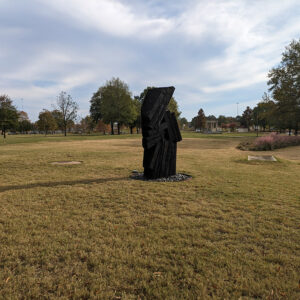 Approaching Collapse
Approaching Collapse 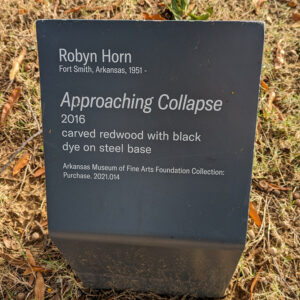 Approaching Collapse Sign
Approaching Collapse Sign 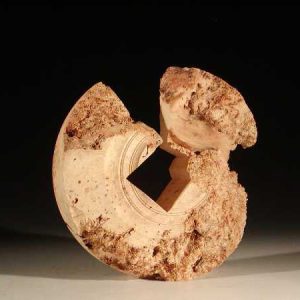 Fractured Millstone by Robyn Horn
Fractured Millstone by Robyn Horn 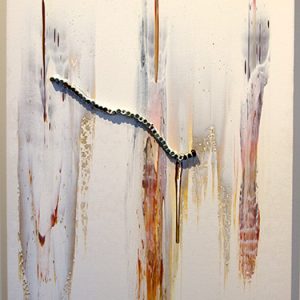 Grouping III by Robyn Horn
Grouping III by Robyn Horn  Hypothetical Destination by Robyn Horn
Hypothetical Destination by Robyn Horn 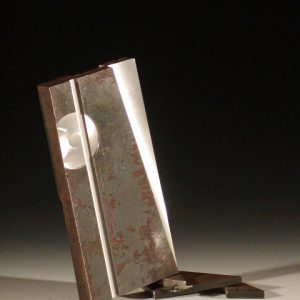 Mixed Elements by Robyn Horn
Mixed Elements by Robyn Horn 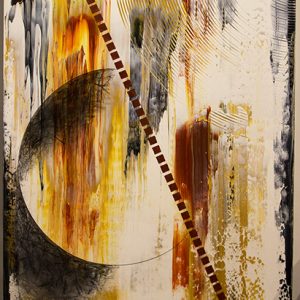 Pierced Moon by Robyn Horn
Pierced Moon by Robyn Horn 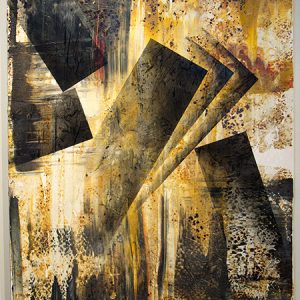 Precariously Wedged by Robyn Horn
Precariously Wedged by Robyn Horn 




Comments
No comments on this entry yet.